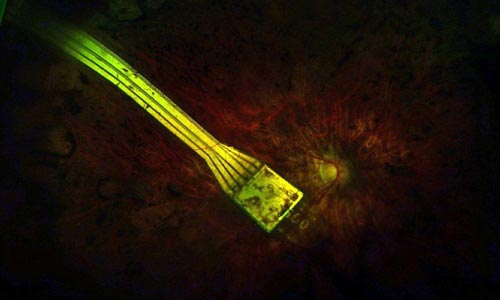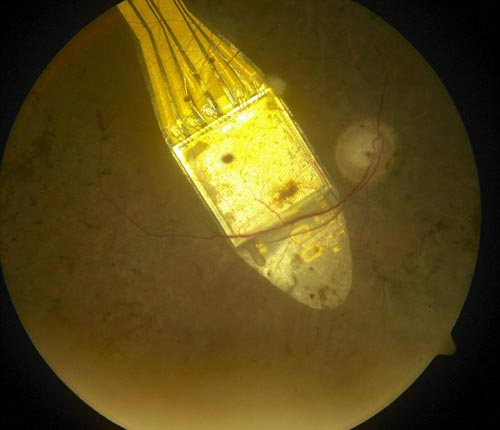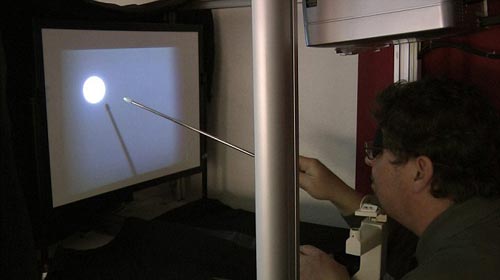神奇:科学家发明植入脑内芯片 可助盲人重见光明
| 导读 |
德国图宾根大学的科学家近日发明出了一种可以修复视力的微型芯片,通过植入病人脑内,放置于眼球后方,帮助9名盲人成功恢复视力。这些病人几乎都是因遗传条件色素性视网膜炎引发的失明。该3mm的芯片能够让1500万患者恢复视觉功能,摆脱失明的困扰。
科学家将微型芯片放置病人视网膜表面下,从而依靠电力刺激病人的视觉问... |

德国图宾根大学的科学家近日发明出了一种可以修复视力的微型芯片,通过植入病人脑内,放置于眼球后方,帮助9名盲人成功恢复视力。这些病人几乎都是因遗传条件色素性视网膜炎引发的失明。该3mm的芯片能够让1500万患者恢复视觉功能,摆脱失明的困扰。

科学家将微型芯片放置病人视网膜表面下,从而依靠电力刺激病人的视觉问题。研究记录中表示,在最近的一些实验中,大部分被植入该微型芯片的患者都开始能够识别出人们的面部表情、以及水果、桌子、路标等物体。其中两名患者的视觉清晰度甚至超过了早期27名实验者的视觉分辨率。

据了解该微型芯片是由1500个像素点组合而成,并带有放大器和电机,从而完成对视网膜神经的刺激。科学家将其放置病人视网膜表面下,依靠电力刺激病人的视觉神经。

该研究不仅证实了视网膜下的植入技术可以帮助一些视网膜变性病人重拾光明,而且不需要任何特殊的设备。色素性视网膜炎是一种可以感染视网膜的疾病,特别是在斑点层的光感受器会慢慢退化,最终导致病人失明。尽管一直以来该疾病都无法治愈,但是视网膜神经在某一点仍然能够发挥其功能。因此,如果这些神经可以被刺激激活,那么病人就会重拾光明,而该微型芯片就是通过提供光敏,给予这些神经一定刺激,从而让病人恢复视力。
原文链接:
Artificial vision with wirelessly powered subretinal electronic implant alpha-IMS
This study aims at substituting the essential functions of photoreceptors in patients who are blind owing to untreatable forms of hereditary retinal degenerations. A microelectronic neuroprosthetic device, powered via transdermal inductive transmission, carrying 1500 independent microphotodiode-amplifier-electrode elements on a 9 mm2 chip, was subretinally implanted in nine blind patients. Light perception (8/9), light localization (7/9), motion detection (5/9, angular speed up to 35 deg s−1), grating acuity measurement (6/9, up to 3.3 cycles per degree) and visual acuity measurement with Landolt C-rings (2/9) up to Snellen visual acuity of 20/546 (corresponding to decimal 0.037 or corresponding to 1.43 logMAR (minimum angle of resolution)) were restored via the subretinal implant. Additionally, the identification, localization and discrimination of objects improved significantly (n = 8; p < 0.05 for each subtest) in repeated tests over a nine-month period. Three subjects were able to read letters spontaneously and one subject was able to read letters after training in an alternative-force choice test. Five subjects reported implant-mediated visual perceptions in daily life within a field of 15° of visual angle. Control tests were performed each time with the implant's power source switched off. These data show that subretinal implants can restore visual functions that are useful for daily life.
来源:搜狐科技
 腾讯登录
腾讯登录
还没有人评论,赶快抢个沙发